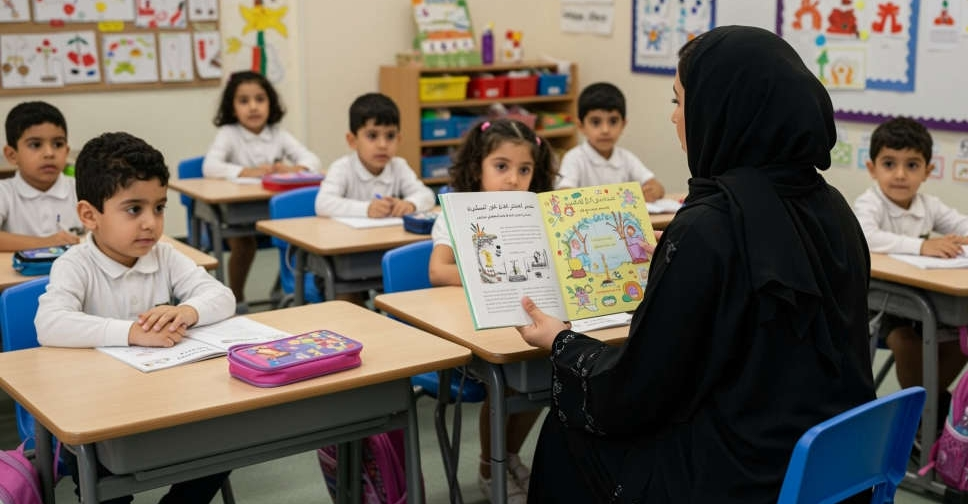The UAE has taken a landmark step by introducing congregational noon prayer in public schools. The Ministry of Education recently announced that schools will now dedicate a specific time each day for students to perform the Dhuhr prayer in congregation.
This decision reflects the country’s commitment to combining academic learning with moral and spiritual development. It is not just about prayer but about reinforcing values, discipline, and cultural identity among the younger generation.
The announcement
The Ministry of Education has instructed all public schools across the UAE to set aside time during the school day for the Dhuhr prayer. Schools will prepare suitable spaces for the congregation, such as halls or clean classrooms, where students can gather for worship.

The plan also includes organizing the call to prayer, arranging prayer rows, and ensuring proper supervision by teachers and administrators. For many schools, this will be an addition to their daily routine, marking a shift in how religious practice is integrated into the education system.
Officials described schools as “homes of values as much as they are of knowledge,” reflecting the idea that education is not only about academics but also about shaping character and nurturing spiritual growth.

Why the UAE made this decision

Strengthening identity
The inclusion of the UAE congregational noon prayer in public schools is aimed at strengthening Islamic identity among students. Leaders see schools as essential places where cultural and spiritual values can be preserved and passed on to the next generation.
Instilling values
Regular prayer teaches discipline, humility, mindfulness, and respect. By praying together, students practice patience, time management, and responsibility, which are valuable life skills. The initiative is therefore not limited to religious obligations but also to personal development.
Building unity
Congregational prayer emphasizes community and togetherness. By having all students gather for Dhuhr prayer, schools can foster a stronger sense of belonging and unity among students of different backgrounds and abilities.
Balanced growth
The UAE has always emphasized a holistic approach to education, focusing not just on academic success but also on spiritual, moral, and social development. The move aligns perfectly with that vision by balancing both intellectual and spiritual aspects of student life.
How schools will implement the prayer
Dedicated spaces
Schools will designate halls, auditoriums, or other suitable spaces for prayer. These areas will be maintained with cleanliness and order in mind, ensuring they meet the requirements for a proper place of worship.
Scheduling
The Dhuhr prayer will be fixed into the school timetable. Administrators will adjust daily schedules so that lessons, breaks, and activities align smoothly with prayer time. This will require careful planning, especially in schools with packed timetables.
Student participation
Students will be encouraged to take part in the prayer congregation daily. Older students may also be given responsibilities, such as performing the call to prayer or organizing the prayer rows. This will help them take ownership of the practice and develop leadership skills.
Role of teachers and staff
Teachers and school leaders will guide and supervise the process. They may help manage the prayer space, ensure discipline, and lead the prayer if needed. Training and awareness will also play a role to ensure the process is smooth and respectful.
Inclusivity
Although the directive is for all public schools, many schools in the UAE have non-Muslim students. Schools are expected to accommodate this diversity by offering alternative arrangements for those not participating, such as supervised study or quiet time. This approach respects inclusivity while maintaining the main purpose of the policy.
Challenges and considerations
While the move has been welcomed widely, it also comes with practical challenges that need to be addressed.
Scheduling conflicts
Fitting the prayer into busy school timetables could be difficult, especially in schools with after-school programs or extended lessons. Administrators will need to ensure that learning time is not reduced or disrupted.
Space limitations
Not all schools may have large halls or suitable areas for congregational prayer. Preparing adequate spaces that are safe, clean, and accessible may require additional planning and resources.
Diverse student body
The UAE’s public schools include students from various backgrounds. While Muslim students will take part in prayer, schools need to manage inclusivity carefully to ensure non-Muslim students also feel respected and comfortable.
Teacher training
Not all teachers may be familiar with organizing or supervising congregational prayer. Schools may need to provide training and clear guidelines to staff to ensure smooth management.
Consistency across schools
Since the directive covers the entire nation, consistent implementation across different emirates will be important. Clear monitoring systems will be required to make sure schools follow the policy in a unified way.
Student and public reactions
Students have responded with excitement to the new initiative. In some schools, videos showed young learners arranging prayer spaces with enthusiasm and joy. This reflects how the initiative can motivate children to take pride in their faith and daily practices.
Many parents and educators view the policy positively, seeing it as a way to keep children connected to their cultural and spiritual roots while also instilling discipline and unity. Others are curious to see how schools will balance academic schedules with this new addition.
Broader impact on society
Preserving culture
By ensuring daily congregational prayer, the UAE is taking active steps to preserve its cultural and religious heritage in a rapidly modernizing society.
Strengthening social cohesion
Prayer time in schools can create shared experiences that promote social harmony and understanding among students, fostering a sense of brotherhood and belonging.
Influence on private education
Although the directive applies only to public schools, it could inspire private schools to introduce similar initiatives or at least make better accommodations for Muslim students to pray during the school day.
A model for other countries
This initiative could also inspire other Muslim-majority nations looking for ways to integrate religious practice into modern education systems without compromising academic quality.
Looking to the future
For this initiative to be successful and sustainable, the Ministry of Education will need to provide schools with ongoing support.
Clear guidelines
Schools will need precise instructions on how to set up prayer times, how long the prayer should last, and how to handle diverse student groups.
Resources
Support in terms of space, maintenance, and training will be essential for schools that may not have the facilities or expertise to manage the program.
Feedback systems
It will be important for the ministry to collect feedback from students, teachers, and parents to assess how well the initiative is working and identify areas for improvement.
Inclusivity and respect
Maintaining inclusivity for non-Muslim students while prioritizing the prayer directive will be vital for the success of the policy.
Conclusion
The introduction of the UAE congregational noon prayer in public schools represents a significant shift in the country’s education system. By formally integrating the Dhuhr prayer into the school day, the UAE is reinforcing the idea that education is not only about knowledge but also about values, discipline, and identity.
While the initiative comes with challenges such as scheduling, space, and inclusivity, it offers immense potential benefits. It can help students grow spiritually and morally while building unity and cultural pride.
If implemented with care, this move could set a powerful example of how modern education can work in harmony with religious tradition, enriching the lives of students and shaping them into well-rounded individuals.
Do follow UAE Stories on Instagram
Read Next – Sunrise in Dubai: A Magical Start to Your Day
















